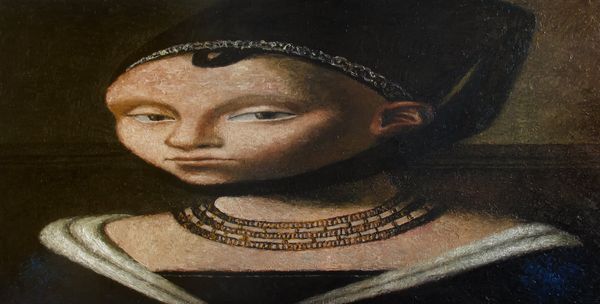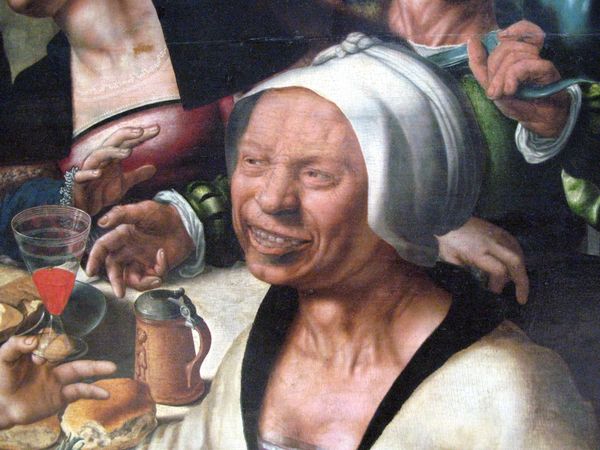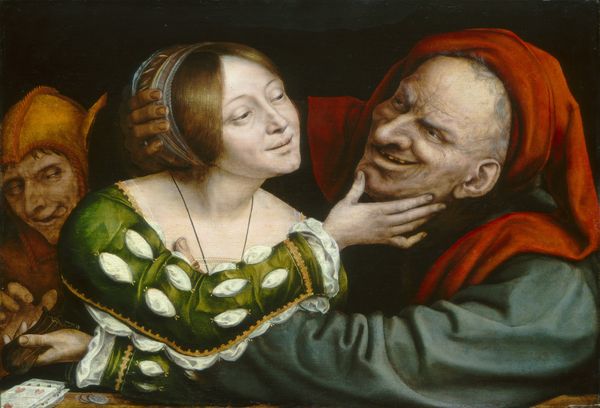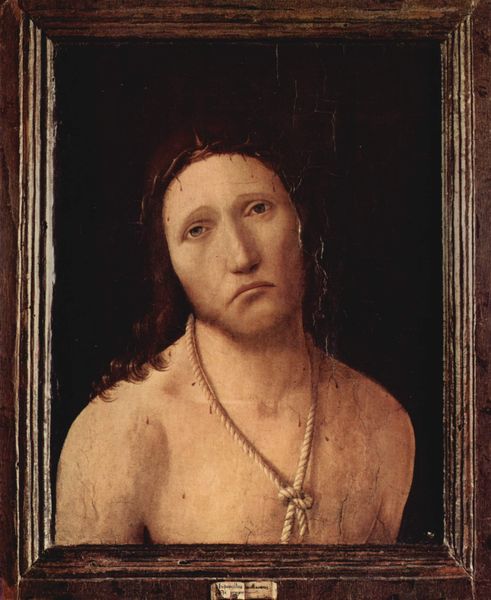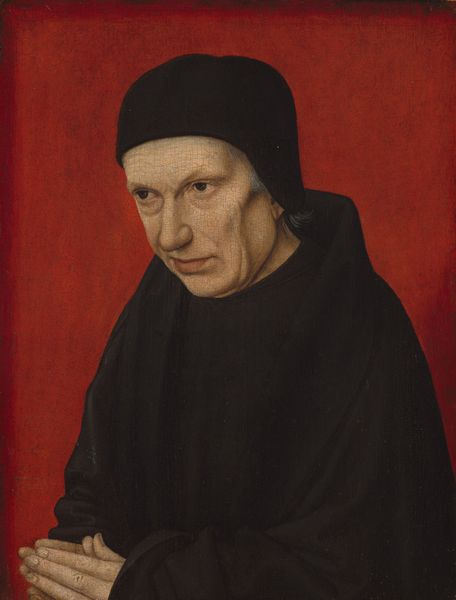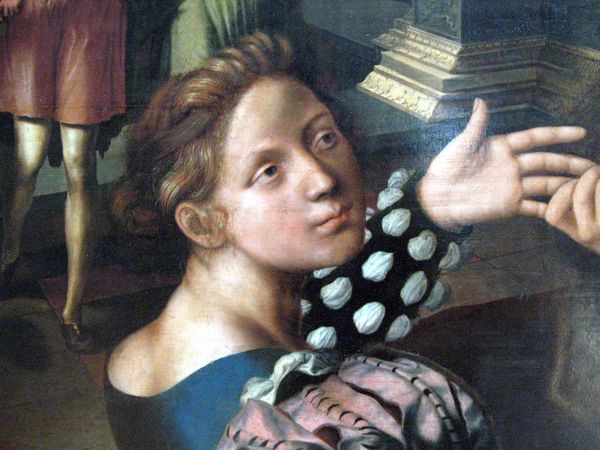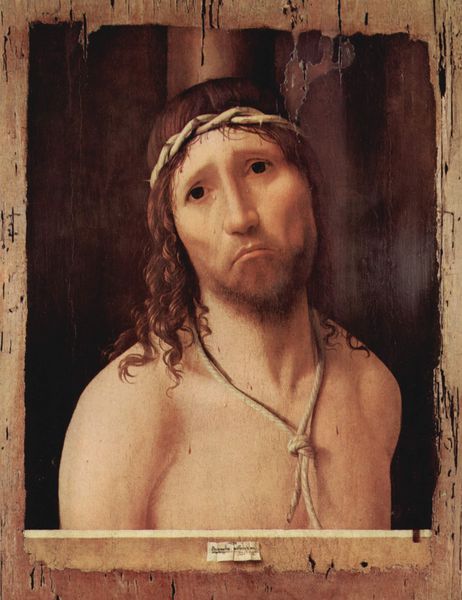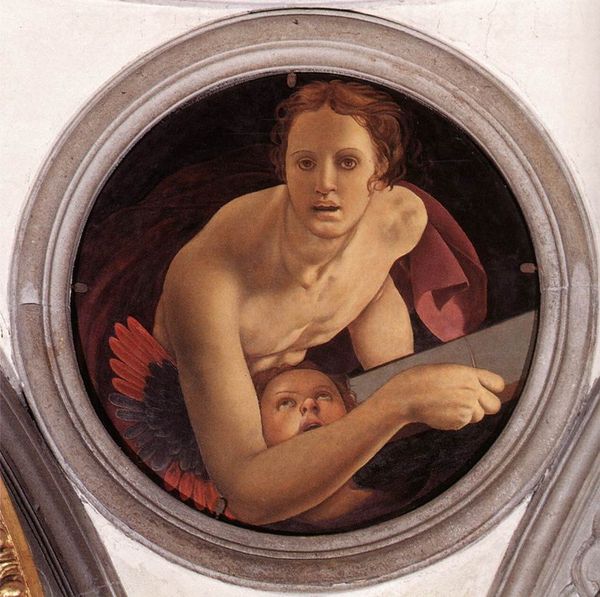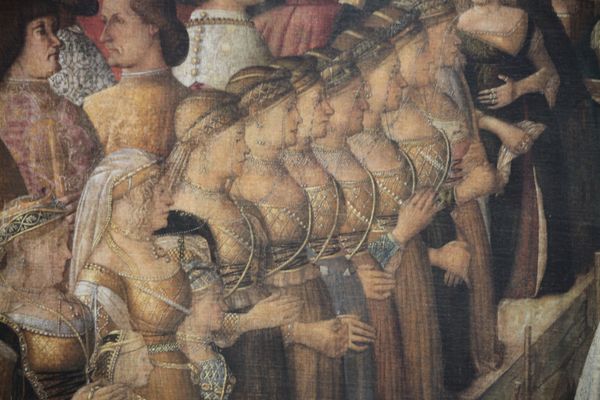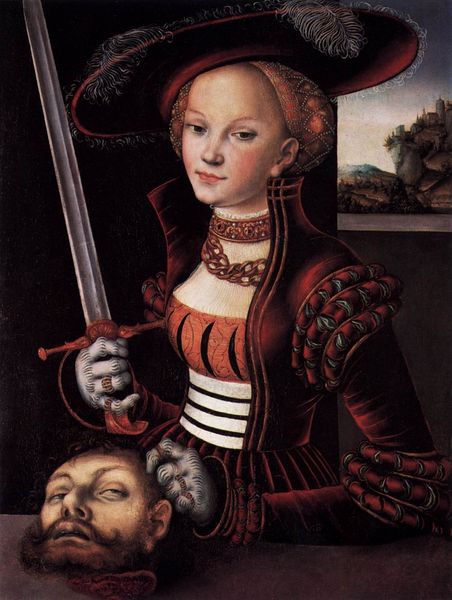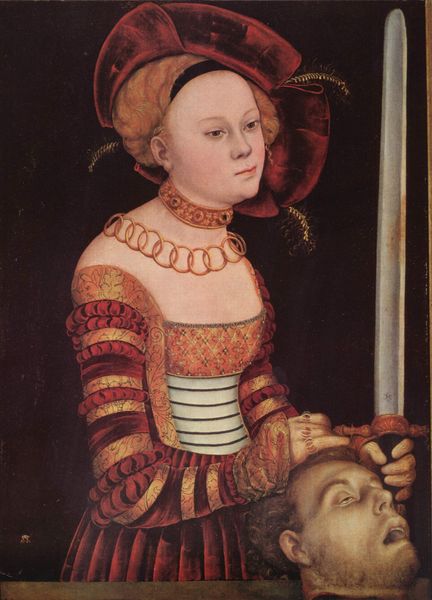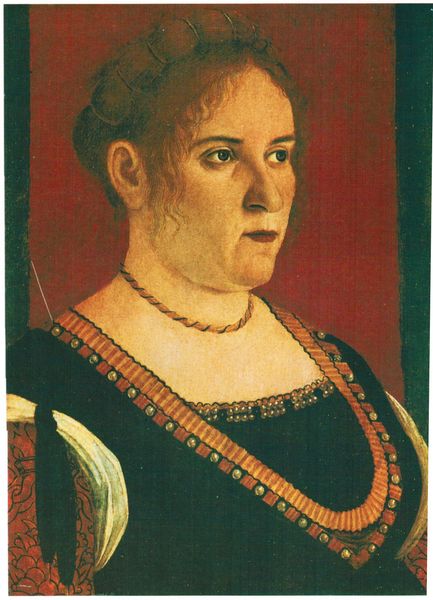
Copyright: Public domain
Why is this painting known as ‘The Ugly Duchess’? Who is this woman, and why does she look so strange? This work was painted around 1513 by Quentin Massys, using oil on a wooden panel. Massys, a Flemish painter during the Northern Renaissance, lived between 1466 and 1530. He was a friend of Leonardo Da Vinci, and the two artists were known to exchange drawings. One of Leonardo’s drawings is strikingly similar to this painting, leading to the false idea that Matsys copied it for many years! So, where does the name ‘The Ugly Duchess’ come from? Since the eighteenth century, art critics believed that this work was a portrait of Margaret, the Countess of Tyrol. The Countess was hugely unpopular during her lifetime – she was even nicknamed ‘Maultasch’, meaning ‘bagmouth’! Yet Margaret died in 1369, almost 150 years before the creation of this painting. It’s more likely to be a general representation of a character rather than a specific person. The elderly woman in this painting is shown as unattractive. Her features are exaggerated, with wrinkled skin and prominent warts. Ouch! She wears a dress with a low-cut neckline, revealing her bust. This would have been completely scandalous to a sixteenth-century audience! The woman also wears a strange horned headdress, known as an ‘escoffion’. During the early fifteenth century, escoffions were the height of fashion. They were clear symbols of high status, because sumptuary (fashion) laws dictated that they could only be worn by members of court. Yet, by the time this work was painted, fashion had changed. Escoffions came to be considered ridiculous and completely out of date. It’s just another detail which tells us that Quentin Massys intended this painting to be amusing and outrageous. The painting was originally one half of a diptych (two-panelled artwork). The other half was a portrait of a man in sensible black clothing. He appears intelligent and serious. What could Massys be saying through this pairing? In her right hand, the old woman grasps a red flower. In traditional marriage portraiture, this symbolises an engagement. When considering the age and appearance of the woman, it’s clear that the artist wanted his audience to laugh at the idea that she might be engaged to the man. So, what do you think of this work? It definitely reminds me of the caricature portraits that you sometimes see being created in tourist locations. It’s an unforgettable painting which just shows us that art doesn’t always have to be intellectual or unfunny!
